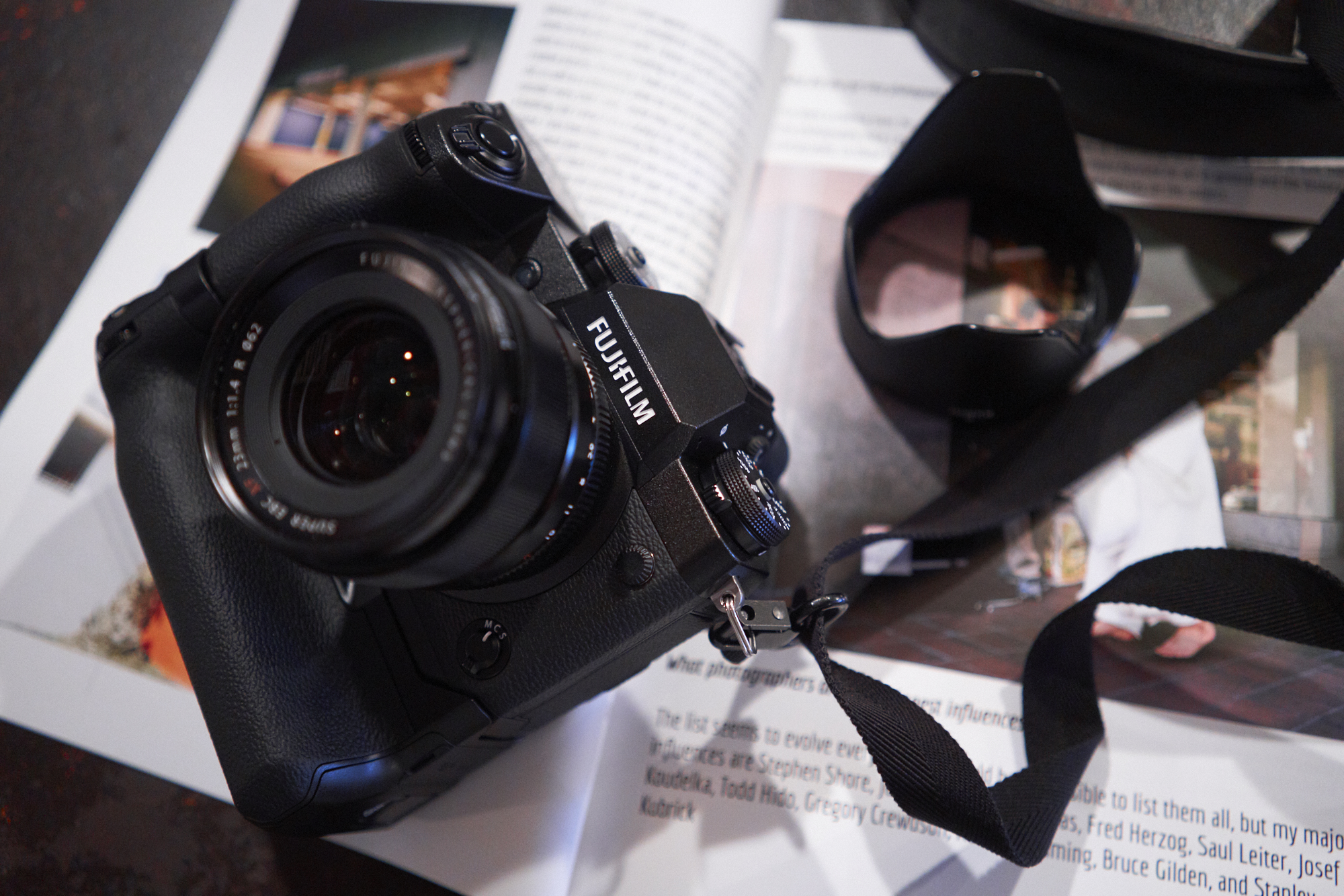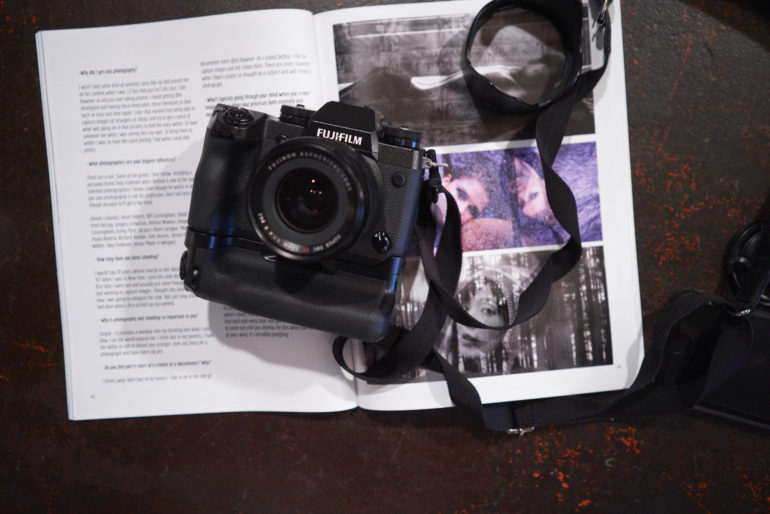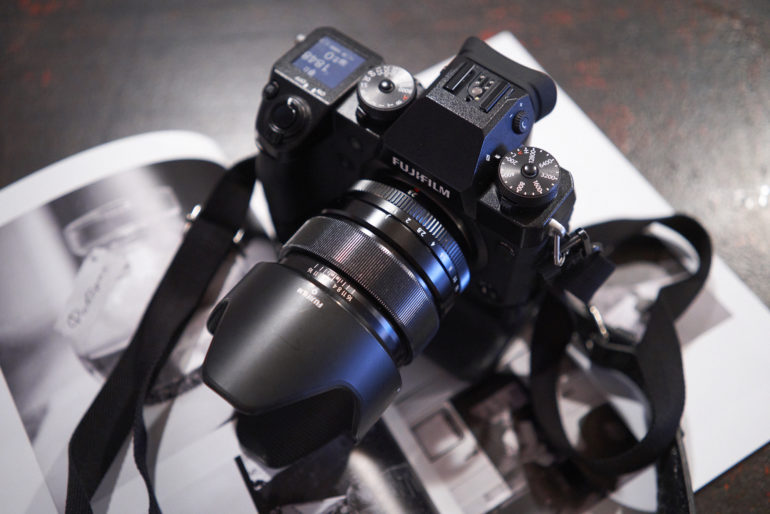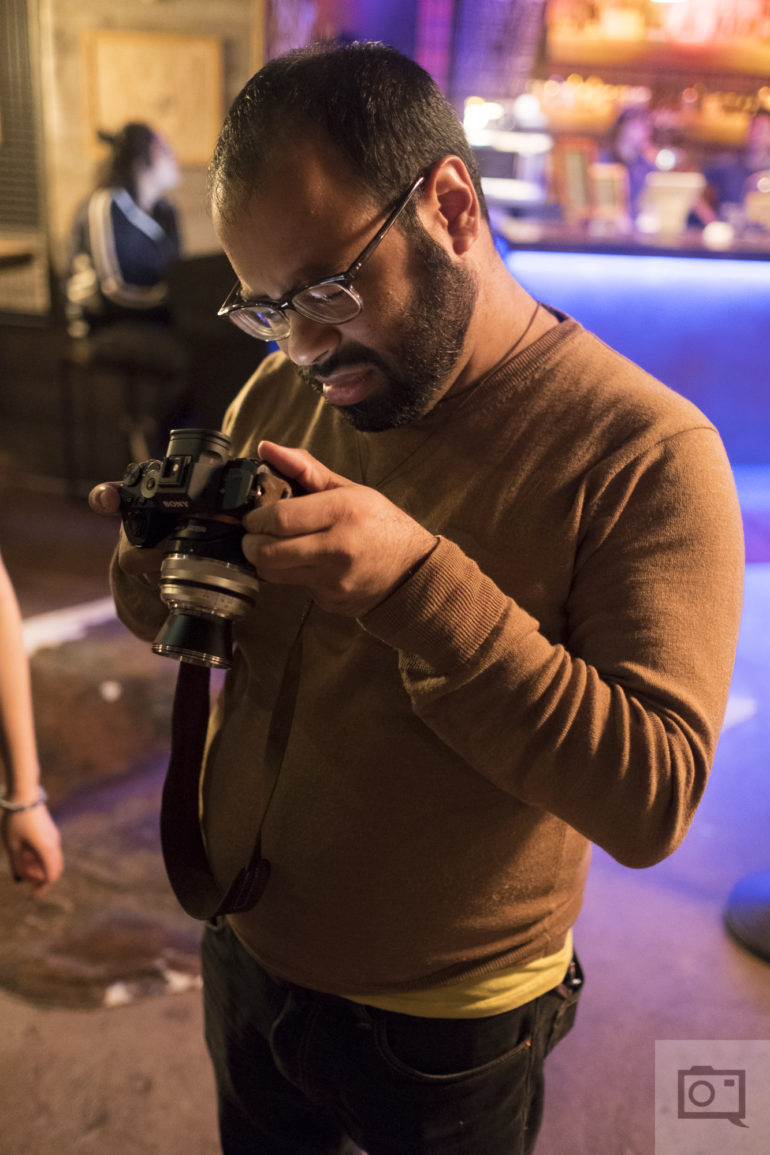Last Updated on 02/03/2020 by Brett Day
The Fujifilm X-H1 is the company’s most curious camera yet.
When the rumors of the Fujifilm X-H1 were circulating, it seemed as if all were good, at least on paper. The Fujifilm X-H1 is being billed as the flagship X series camera and addresses a number of concerns photographers and users have had for a while. It has 4K video at a number of frame rates and with high-quality options including F log and 200MB/second. Then there have been enhancements to the autofocus, weather sealing enhancements, and some ergonomics changes to make the camera more like a DSLR without a mirror and pentaprism. At the heart, it’s using the same 24MP APS-C sensor many of Fuji’s other cameras use. And in truth, the Fujifilm X-H1 is a really excellent camera. But at the same time, this is hands down the camera with the worst ergonomics I’ve ever felt from Fujifilm.
The Fujifilm X-H1 is being billed as designed for the professional. But the Fujifilm X Pro 2, Fujifilm X-T2 and Fujifilm GFX 50s already did that. I know a bunch of photographers who carry these around as their everyday workhorses. It’s about on par with pricing with the Nikon D500 and offers a lot of the same functionality and quality. Like I said earlier though, something that ruins it is the ergonomic experience–and this permeates through the entire use of the camera.
Pros and Cons
Pros
- Great image quality
- The best autofocus of any APS-C camera on the market
- Film styles
- 4K 24p 200MB/second video is fantastic
- Weather sealing
- Pretty good battery life if you switch off all connectivity
- Easiest setup and connection to a mobile phone that I’ve experienced
- Top LCD screen is nice
- Dual card slots
- Versatile images
- Fantastic EVF
Cons
- Fujifilm Eterna is overrated
- Bluetooth being on in the background can drain battery life on top of the IBIS
- The grip and the size overall make it difficult to reach the shutter dial and it’s very difficult or nearly impossible to reprogram the exposure functions due to how their lenses work
- Vertical grip isn’t necessary really, but I see how and why folks would like it
Gear Used
We tested the Fujifilm X-H1 with the 23mm f1.4, 16mm f1.4 R WR, the vertical grip, and Rode microphones.
Fujifilm X-H1 Highlight Specs
These are the official Fujifilm spec highlights for the X-H1, as taken from the official announcement press release.
- X processor Pro
- Integrated 5-axis image stabilization (IBIS)
- Vibration-free closure
- Professional video features (including Cinema 4K)
- Large electronic viewfinder with 3.69 million pixels
- Folding and swiveling 7.6 cm (3 inch) 1.04 million touch screen LCD pixels
- 25 cm (1.8 inch) shoulder display
- Particularly robust housing
- Splashproof and dustproof
- Cold-resistant to minus 10 degrees
- Improved AF algorithm
- Dual memory card slot
- Wi-Fi function
- Film simulation modes (including ETERNA)
- Creative filter effects
Ergonomics
Taken from our first impressions
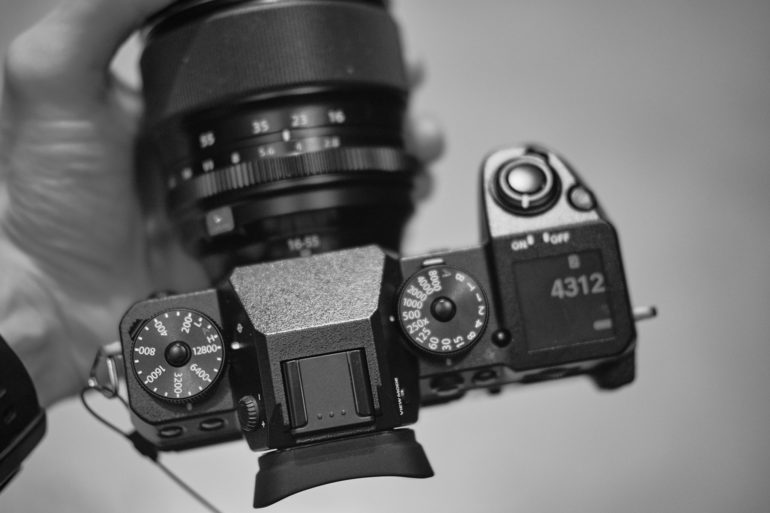
The ergonomics of the new Fujifilm X-H1 are unlike that of any X-Series camera before it. Taking design cues from both the X-T2 and the GFX-50S, the X-H1 almost feels like a merger of the two bodies. The grip and LCD top plate are very ‘GFX-esq’ while the remaining portion of the body is very much inspired by what Fujifilm did with the X-T2, though improved upon in various ways.
On the top of the camera you have two main dials; one for the ISO and one for the Shutter Speed controls. Both of these main dials also feature a secondary lower dial; one to control the drive mode, and the other to control the metering mode. As well, as noted above, there is now an LCD on the top plate which displays your current camera settings. It is also customizable, allowing you to show the information important to you.
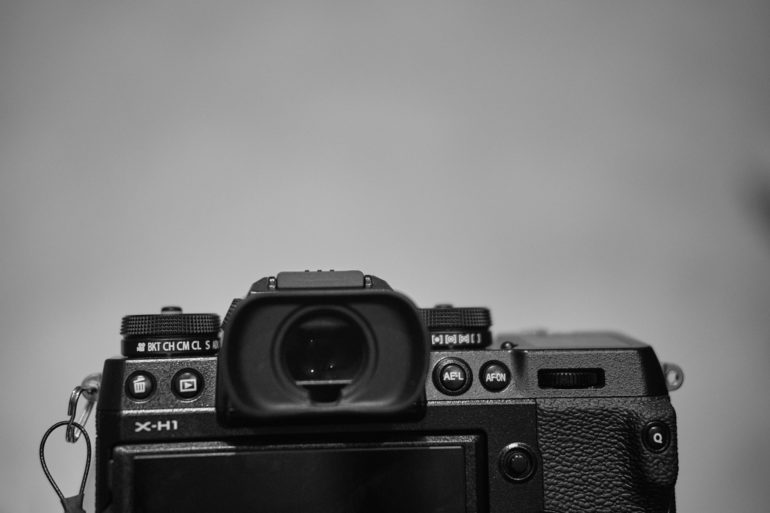
Around to the back of the X-H1 you will find a layout very reminiscent, though different in a couple ways, to the X-T2. It has that same touchscreen design as the X-T2 and the GFX-50s. This is a great feature to have and is very welcome in the X-H1. One of the changes that Fujifilm made on the rear of the X-H1 to improve usability over the X-T2 was to move the ‘Q’ button from just below the AF Joystick to the outer edge of the thumb hump.
Overall, the X-H1 felt really good in my hands, and is the first X-Series camera announced since the X-Pro2 that had me loving how it felt in my hands right off the bat.
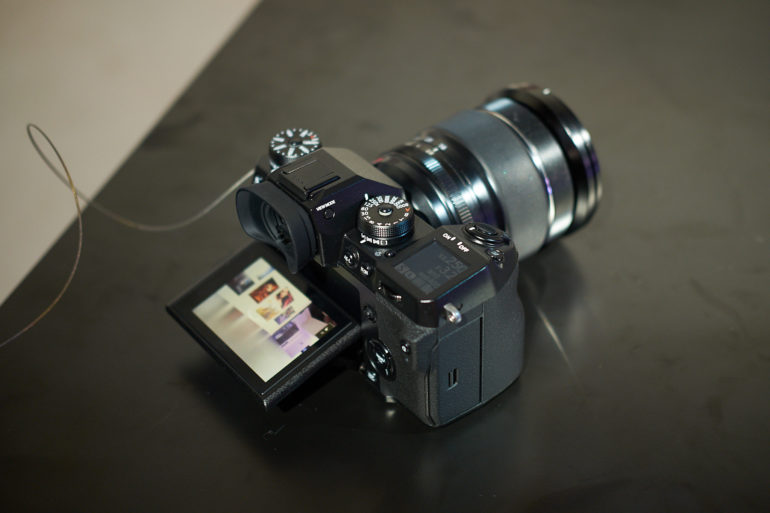
Build Quality
Let’s start with the good: I found the Fujifilm X-H1 to be pretty damned tough. I took it out in the rain and a snowfall at one point. The camera and the 16mm f1.4 R WR stood up to the snow and rain with no problems at all. For that it should be totally given awards. But the thing is that every single weather sealed Fujifilm body that I’ve used had been able to do the same thing with the right lens. I’ve taken the Fujifilm X Pro 2 and various weather sealed lenses out into storms with no qualms. They simply just work and they’re fantastic.
Where I have some major issues though is with the placement of the dials on top of the camera–they’re all very difficult to get to and you need to completely remove your hand from the grip to do so. If you’re shooting in aperture priority you’ll be fine, but if you’re shooting in manual, then you’re out of luck. It’s going to be cumbersome and annoying. To verify this, I put the camera into the hands of a number of other Fujifilm camera users; and everyone hated it. To say the least, this is a major disappointment. I’ve grown to like the ergonomics of the Fujifilm X-T2 despite my still preferring the X Pro 2 and all the stacked ISO/shutter dial madness that people don’t understand because they don’t shoot film. So giving it this big hefty grip doesn’t make any sense.
However, one could make the same case of the Fujifilm GFX 50S. But in that case, you’re not going to be changing the shutter speeds often and medium format is used in a completely different way. Indeed, these ergonomics bleed into the ease of use.
Ease of Use
Let’s start again with the great things: the touchscreen and the simple pairing with your phone or tablet is fantastic. More companies should do things like Fujifilm in this regard. Fujifilm has the ability to swipe on the touchscreen and activate different settings; it’s better this time around but I’d still prefer dedicated buttons for things like white balance. Where things become annoying is when trying to actually change settings for manual mode or anything else. Fujifilm cameras have always been great because you’d rarely need to take your eye out of the viewfinder when shooting to change a setting. You’ll absolutely need to do so here. For the Fujifilm X-H1, this is a pretty big problem. If you’re doing documentary style work, you’ll be forced to use aperture priority. If you’re doing portraits, you’ll be fine. But you really shouldn’t need to feel like Fujifilm doesn’t want you to move the ISO and shutter speed dial.
What could have fixed this? A smaller body or changing the placement/style of the shutter speed and ISO dial.
Otherwise, some of the best things about this camera are the in body image stabilization and the fact that when you first boot it up, it tries to pair with your smart device in an attempt to figure out the time zone, time, etc. It also has bluetooth connection and the ability to send images to your phone via bluetooth, but I could only get it to work via WiFi.
Back to the image stabilization, I was able to shoot at almost 1/5s with it activated. That’s darned good, but not Olympus’s.
Autofocus
The Fujifilm X-H1 has fantastic single autofocus and fantastic continuous autofocus. In video, I’m really, really impressed at the camera’s ability to keep a subject in focus. One weird anomaly that I encountered is that I needed to disable face detection in the dedicated menus and on the quick menu. But I’m sort of willing to forgive that one. In terms of focusing speed, I can’t complain at all. Even in the dark, this camera and the lenses were able to keep pace. In total, I perhaps had only 3 misfocuses out of the 1,000+ images that I shot with this camera. And that isn’t terrible at all.
Metering
Fujifilm’s metering has always been weird, and with the Fujifilm X-H1 it’s even so just the slightest bit off. If you meter a scene according to the laws of Sunny 16, the Fujifilm X-H1 will say that your metering is just slightly underexposed by maybe 1/3rd. That’s not bad at all and I’ll live with it.
Image Quality
The Fujifilm X-H1 has pretty fantastic image quality overall. I indeed do feel that it is worthy of working for professional photographers, but when you compare it to the highest end Sony sensors, only then do you start to see where the Fujifilm X-H1 can pale in comparison. But if you compare it to something like the Sony a7 III, then you’ll see how the Fujifilm X-H1 has better colors, very good dynamic range and even pretty darned great high ISO output.
JPEG Output
Why? Well, the Fujifilm X-H1 can surely shoot JPEGs and if you’re shooting and beaming images to your camera via the available Bluetooth option, then you’ll surely care about the JPEG output. It’s very good and most folks who are using their favorite film emulsion setting may not care too much otherwise.
RAW File Versatility


The Fujifilm X-H1 has a weird sensor. So follow along here:
- At lower ISOs, you can push and pull quite a lot of detail out of the shadows and the highlights. In fact, at lower ISO settings it’s very easy to get an HDR from a single image.
- At higher ISOs you can only pull more detail out of the highlights.
How does that make sense? In my testing of the RAW files in Adobe Lightroom CC, this is what it all seemed to be like. I haven’t run the files through Capture One as it doesn’t support the Fujifilm X-H1 yet, but I really do wonder if the processing will be the same. The color depth at ISO 400 and below I find to be uncanny. The color seems better than the Sony a7 III’s. Part of this is due to the X Trans sensor.
High ISO Output
Is there noise? Indeed there is. Does it look bad? Not really when you’re looking at it on a screen. I’m not sure that I would print images with really high contrast at 17×22 and at ISO 6400, but it’s more than good enough for the web: which is where I think most of you will be sending your images. Overall though, ISO 6400 and even 12,800 are very clean.
Video
What I really enjoy about the Fujifilm X-H1 is the video quality. I’ve been waiting for a solid Fujifilm camera that shoots great video for awhile and this is it. You’ll get in box stabilization, 200MB/s, 24p, 4k, good output at ISO 6400, nice lenses, and all. There isn’t a whole lot to complain about but the autofocus can be a tad slow at times. But that just makes sense to me.
Extra Image Samples
Conclusions
Likes
- Autofocus
- Image Quality
- In body image stabilization
- Nice video upgrades
Dislikes
- The ergonomics
- How the ergonomics seep into everything that you need to do with this camera
The Fujifilm X-H1 is a fantastic camera in many respects. The company gave it bar none the best autofocus of any APS-C camera out there. On top of that there is great image quality, in body image stabilization and the addition of great video. Plus it’s weather sealed and has menus that are pretty simple to use. The biggest problem has more to do with the ergonomics: they just don’t feel right and you need a massive hand to even make sense of it otherwise. Fujifilm is taking what’s so great about them (their retro ergonomics) and trying to get rid of them at least with this camera. And I feel like that’s wrong. If they had made the camera bigger and even perhaps gotten rid of the massive grip for the hand, it would have made sense and would have perhaps been more like an old Nikon F.
The professional photographer that this camera is targeted to will have a serious time considering whether or not to get it. It has all of the absolute best features that Fujifilm has packed into it, but the ergonomics are just so much of a let down.
The Fujifilm X-H1 receives four out of five stars. Want one? Check out the latest prices on Amazon.


